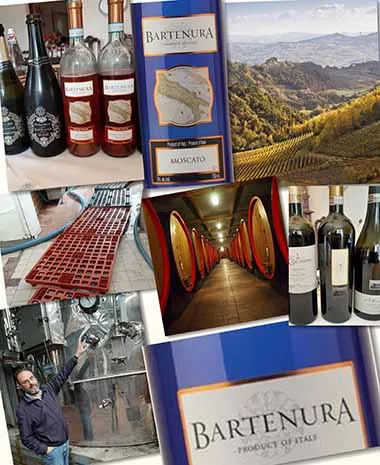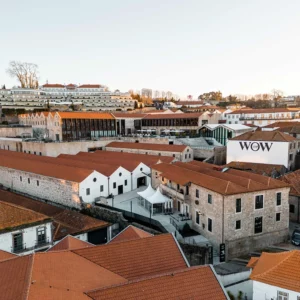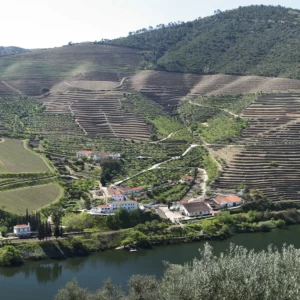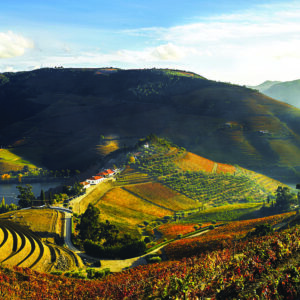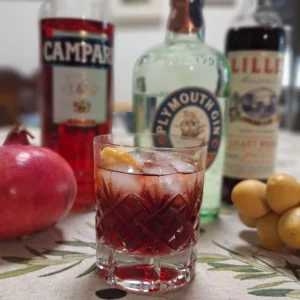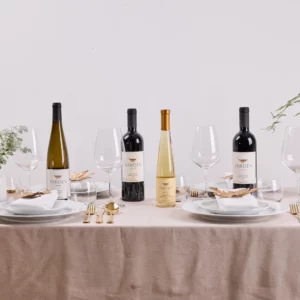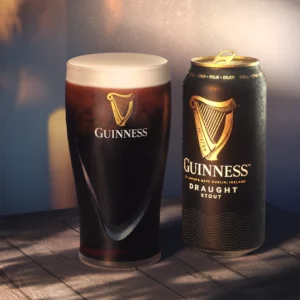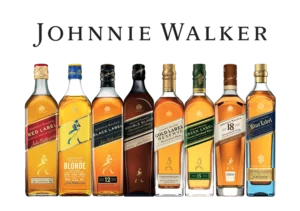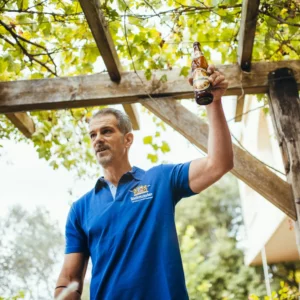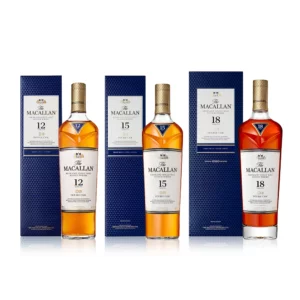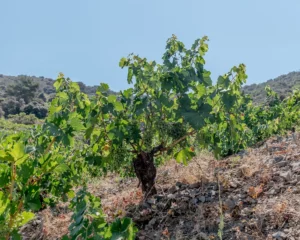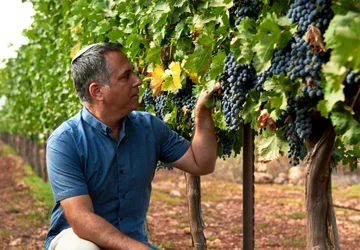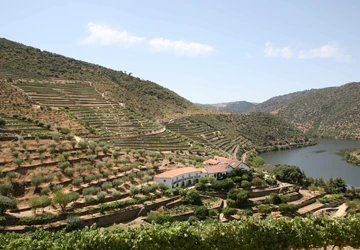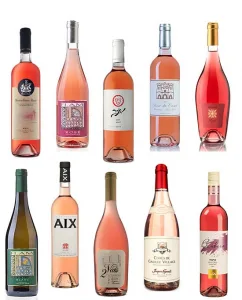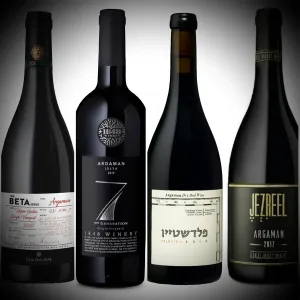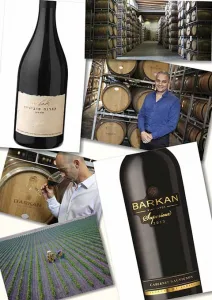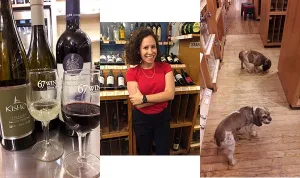The first Moscato wine I ever tasted was believe or not at the Robert Mondavi Winery in California in the 1990’s. I remember thinking, now that’s tasty and original! As usual in those days Mondavi was ahead of the game. The Mondavi of Israel in terms of the pioneers, was the Golan Heights Winery. Not surprisingly, they were first to bring the Moscato style to Israel.
In those days the main muscat grape planted here was the Muscat of Alexandria, one of the oldest of all varieties, indigenous to the southern and Eastern Mediterranean. The best quality muscat though, with a more refined, less blowsy aroma, was the Muscat de Frontignan or Muscat Blanc a Petits Grains. This was known as Muscat Canelli in Italy, where the style of Moscato wine had its origin. The Golan Heights Winery was the first winery to plant Muscat Canelli in Israel, and their Moscato produced in the late 1990’s preceded the boom.
In the 2000’s Moscato took off in Israel and particularly in America, where the phenomenon became known as ‘Moscato Madness’. What was the attraction? Simply it was low alcohol, sweet, slightly sparkling, with aromas of peaches and pears, a full grapey flavor, in a light frothy way ……and most important, it was tasty! More and more wineries produced it here, usually producing it from the Muscat of Alexandria grape, which made a comeback at the same time as other sweet or dessert wines were in decline.
The area of the world where this style of wine came to be, is in the beautifully hilly region of Asti in Piedmont, in north east Italy. They are famous for two wines in a similar genre. One is closer to a sparkling wine, the other to a dessert wine. Asti Spumante, or Asti for short, is a sweetish, sparkling wine made from muscat grapes, at a minimum of 9% alcohol, with a bulbous sparkling wine cork, and a protective wire cap to keep it in place. In other words, it looks like a sparkling wine. Moscato d’Asti is frizzante, which means lightly sparkling. It normally comes with a regular cork, is sweeter and is classified as a dessert wine, but is low alcohol, usually between 5-6%, closer to the alcohol of a beer than a wine. Some do not classify it as a wine, because the alcohol is too low, but they do in Asti, which is good enough for me.
When the Royal Wine Company, the pioneer of quality kosher wine worldwide, first decided to delve into dry kosher wines, they chose to go to Italy rather than France, and one of their first international brands was Bartenura. This was named after a 15th century Italian rabbi. Rabbi Ovadia ben Avraham of Bertinoro was a commentator on the Mishnah, became the rabbi of Bertinoro, a town in the province of Forli and he was known as ‘The Bartenura.’ To make a Moscato was an obvious thing to do. Its sweetness, low alcohol and easy drinking nature would surely appeal to the Jewish consumer, who was still wedded to sweet wines.
In 1992 Royal decided to put their Moscato in a blue bottle. This caused all sorts of problems for the producer, because blue was not a bottle color approved by the authorities in this particular region. However, they stuck with it, even though it would have been easier to conform. In 1997 another famous wine brand, Blue Nun, also decided to put their wine in a blue bottle. Today the blue bottle has become a talisman and is copied all over the world, but those two pioneers became legends. Bartenura Moscato became the largest selling wine in the kosher sector (not including kiddush wines like Manischewitz), the largest selling Italian Moscato in the United States and the largest selling imported Moscato from anywhere. Blue Nun, then in decline worldwide, became the largest selling brand in Israel. Bartenura Moscato is a 5 million bottle brand, and Blue Nun is a two million bottle brand in Israel. Imitation is the sincerest form of flattery. The idea of using blue bottles is spreading like a rash. Just look at the shelves in your local supermarket and wine store.
The Bartenura and Moscato boom took off. It was brought home to me when I visited a supermarket in California and saw two Moscatos sitting side by side on the shelf. One was Barefoot Moscato, owned by Gallo, the largest winery in the world, and the other was Bartenura Moscato in its iconic blue attire. The kosher category was nowhere to be seen.
Bartenura firstly conquered kosher, then transcended it moving into the general market and finally led the category. The reason was the quality of the product. It is authentic, tastes as it should and is a signpost of exactly what Moscato should represent. Secondly the product was brilliantly marketed and positioned astutely by the Herzog family. Of course, there were also hefty junks of luck. Bartenura Moscato rode on the crest of the wave of the new interest in this style of wine. In America, it was uniquely adopted by famous rappers and the young, trendy hip hop crowd, who gave the wine good advertising and credibility well outside the confines of the restricted kosher market. The taste, look and image were exactly right.
To the Jewish community, Bartenura ticks all the boxes. There are still many that make Kiddush mixing grape juice and Kiddush wine. A Moscato is a pretty good alternative for a ritual wine to be shared by all the family. It won’t satisfy those who traditionally prefer red, but everyone will like it, especially the great Aunt who hates wine! It may literally be drunk any place, any time. It may be enjoyed at breakfast, brunch, or as an aperitif. It is perfect with spicy Asian food, as a dessert wine to accompany light fruit-based desserts or with cheese. It is probably at its best as an informal party wine.
Moscato should be served ice cold. Even put it in the freezer for a short time, but don’t forget it. You can serve it either in a flute or tulip glass, or in a regular white wine glass. This is a wine that reminds me that wine is meant to be fun, informal and tasty. Just because the wine intelligentsia frown on it, does not mean that real people, who actually drink wine rather than talk about it, are forbidden to enjoy it. In America it has become cool and trendy to drink Moscato, and Bartenura is on top of the pile.
Funnily enough, when I was visited Siena in Tuscany recently, I visited the old Synagogue. There on a wall plaque was a mention of various Moscatos. Whilst I was busy contemplating which Moscato this referred to, I was told that the name referred to various members of the Moscato family and that it was a well-known Jewish name, particularly in the Rome community. A coincidence, but even in name, as well as style, it is the perfect match.
Royal Wine Corp makes kosher wine all over the world. As a rule, particularly in Europe and the southern hemisphere, they create their own brands, and use a surrogate winery for making the wines, but like the surrogate mother, these are not always publicized. For me, I like to know who the partners are, because it greatly adds to the credibility of the product. Why it is important is that the Bartenura brand, which also includes red wines, is made in three different wineries. There are no less than eighteen Bartenura wines in Royal Wines portfolio. Those called Bartenura come from Piedmont, those named Ovadia come from elsewhere.
I decided to investigate the winery that produces the wines in Piedmont, including the best-selling Moscato. It is called Araldica Castelvero and is situated at Castel Boglione, in the province of Asti, in the south eastern part of Piedmont. Piedmont is most famous for its Barolo and Barbaresco, but Asti is more well known for its Spumante and Barbera.
Araldica is a cooperative founded in 1954. It is one of the largest wineries in Piedmont producing 15 million bottles year. They produce all kinds of wines but specialize in Barbera, Gavi, Asti and Moscato. The largest brand they produce is the Bartenura. They farm 900 hectares of vineyards covering Monferrato, Lange and Roero and have 140 partner growers. The vineyards are sustainable, which is quite an achievement in bringing all the growers on board. Araldica produce a further 10 million bottles sourced from outside the region.
Despite it being a cooperative, (like Carmel was until 2013), it is a kind of family affair too. Since 1991, the CEO is Claudio Manera, who used to be the winemaker. His father, Livia Manera, was CEO before him and his wife Lella shares the winemaking duties. They make wines which are accessible, reasonably priced, and have good typicity. They are consistent, using state-of-the art technology, efficient and professional, which is why they supply so many of the major supermarket chains.
The Bartenura brand is so big that making kosher wine has become part of the routine for Araldica’s staff. The presence of kosher wine is all the year round, so they have permanent instructions in place. Pipes are protected using a creative bridge of upturned plastic containers and tank valves are protected by masking tape and warning signs. These are to avoid the precious Bartenura Moscato, accidentally becoming at a touch, a regular, non-kosher Moscato!
Barbera is heavily planted in Piedmont. Whereas in Alba, it is the main star Nebbiolo that gets the best vineyard sites, in Asti, the Barbera receives the best attention. Their best Barberas come from the beautiful restored Monferrato estate called Il Cascinone. Barbera tends to produce deep colored wines with red fruit (cherry berry), good acidity and low tannins. The young wines are easy drinking and quaffable. The more serious Barberas are aged in a combination of bottis (large traditional barrels) and small barriques to produce a richer, deeper and more complex style. I personally love Barbera and the range produced by Araldica at different price points, tick the right boxes.
Araldica also own two small estates called La Battistina and Tenuta Santa Seraffa, producing different local expressions of Gavi from the Cortese grape. This is the main white wine of Piedmont. Gavi is a fresh, citrussy white with a mildly floral nose and good minerality. It is the Aradica’s skill with Barbera, Gavi, Asti and Moscato, which show their credentials. So, when Royal Wine chose them as partners, it was a good choice. Apart from the all-conquering Moscato, they also produce a very good kosher Pinot Grigio, Prosseco and Asti under the Bartenura label.
Royal Wine and Araldica began their cooperation when Bartenura was a niche brand solely for the kosher market and Moscato was just another style of a sweetish wine, along with all the others. Today Bartenura Moscato looks well past the Jewish market and it has become an icon representing the Moscato d’Asti style to the world. Their Muscat Canelli is grown on those beautiful undulating vineyards, and the wine is produced in specially strengthened and domed stainless steel tanks that maintain the fragrance and trap the natural gas from the fermentation. Once the wine is in the bottle, the production side has played its part. From then it is down to the marketing by Royal Wine. One day in the future someone may write a text book on wine marketing and use this as a case study.
Bartenura Moscato is the best example yet, that a kosher wine, does not have to remain a Jewish wine.
Adam Montefiore has advanced Israeli wine for over thirty years. He is the wine writer of the Jerusalem Post. www.adammontefiore.com


